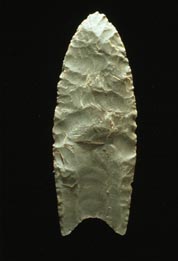Museo Popol Vuh
One of its missions is to provide an educational focus for people who want to see and learn about the pre-Columbian past of Guatemala with the preservation, research, and diffusion of information.
[1] Although the museum is well known for its funerary ceramic art, the collection includes a variety of portable stone sculptures, especially from the Preclassic period, and from the coast and adjacent highlands.
[2] The origin of the museum dates back to 1975, when Mr. Jorge Castillo hired Maro Tejada, a student of archaeology at la Universidad del Valle, to classify his extensive collection.
The museum was created originally in 1977 to house the collection of Mr. and Mrs. Castillo and now forms part of a beautiful architectural complex of the Universidad Francisco Marroquín in Guatemala City.
Jorge and Ella Castillo donated most of their collection of archaeological and colonial pieces in 1978 which are the basis of the Popol Vuh Museum today.
[2] The museum offers guided tours of each gallery along with workshops such as archaeological excavation, restoration activities, Mayan pottery creation, etc.
The Paleoindian period is characterized by hunter-gatherer groups who entered the America by crossing a land bridge connecting eastern Siberia and Alaska.
[1] Influence from the large city of Teotihuacan in central Mexico is evident in ceramic art with incense burner and cylindrical tripods of decorative styles.
[1] The Mayan hieroglyphic texts excavated from this region were advanced, indicating a great level of complex interaction between cities and their political leaders.
Exhibits include painted ceramic art of several regional styles depicting mythology, religion with god like figures containing hieroglyphic texts, and often indicating the owner of the piece and the artist.
Exhibits in the museum from this era include plumbate pottery which has orange and grey tones and depicted lives of animals and supernatural entities of their surfaces.



